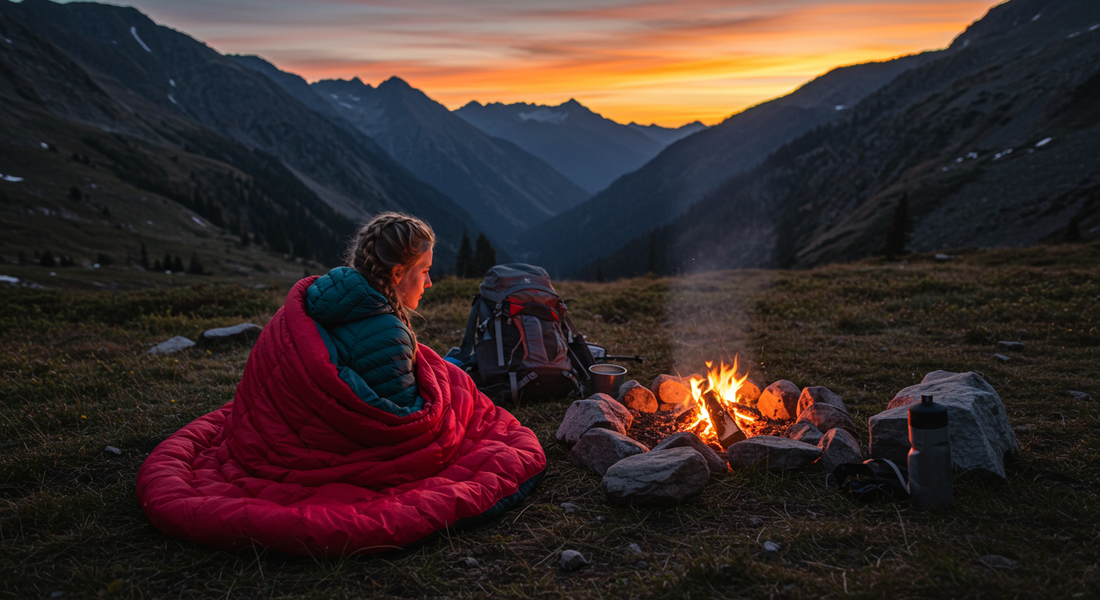
How to Build the Perfect Sleep System for Camping: Pads, Bags, and Pillows Explained
Share
1. Introduction: Sleep Well, Explore Better
A great night’s sleep can make or break your camping experience. Whether you’re deep in the backcountry or setting up by the lakeside, rest is what fuels your next day’s adventure. At Packstead, we believe that your sleep system should be more than just a place to crash — it should be a sanctuary in nature.
A proper camping sleep setup combines comfort, insulation, and portability. In this guide, we’ll break down how to build the perfect sleep system using three essential components: sleeping pads, sleeping bags, and camping pillows — and how each piece contributes to better rest outdoors.
2. Understanding the Sleep System: The Three Key Layers
Your outdoor sleep setup isn’t just one item — it’s a layered system designed to work together. Each layer serves a specific purpose:
-
The Pad: Insulates and cushions your body from the cold, hard ground.
-
The Bag: Traps heat and maintains warmth through insulation.
-
The Pillow: Supports your head and neck for natural alignment and comfort.
When combined, these three components create a microclimate optimized for rest — even in challenging conditions.
3. Choosing the Right Sleeping Pad
A sleeping pad is the foundation of your comfort and warmth. It prevents body heat loss to the ground and provides cushioning to help you sleep soundly on uneven terrain.
Types of Sleeping Pads:
- Air Pads: Lightweight and highly packable, ideal for backpackers. They offer customizable firmness but may require care to avoid punctures.
- Self-Inflating Pads: Combine open-cell foam with air chambers for great comfort and insulation. Perfect for car campers and weekend adventurers.
- Closed-Cell Foam Pads: The most durable and insulating option, though bulkier. Excellent for cold-weather or alpine expeditions.
Key Factors to Consider:
- R-Value: Indicates insulation. Higher R-values (4.0+) are better for cold conditions.
- Weight and Size: Choose based on your activity — ultralight for backpacking, thicker for comfort camping.
- Surface Texture: Anti-slip surfaces keep you stable throughout the night.
A reliable pad balances warmth, comfort, and packability — the essential trio for outdoor rest.
4. The Sleeping Bag: Your Cocoon of Warmth
Next comes your sleeping bag — arguably the most critical component of your sleep system. Its main job is to trap and retain heat efficiently.
Types of Sleeping Bags:
- Down Insulation: Exceptionally warm and compressible. Ideal for cold and dry conditions.
- Synthetic Insulation: Retains warmth even when damp and dries quickly. Perfect for humid or unpredictable weather.
Shape Options:
- Mummy Bags: Streamlined for warmth retention, ideal for backpacking.
- Rectangular Bags: Provide more room and comfort for casual camping.
- Double Bags: Designed for couples or families sharing warmth.
Temperature Ratings:
Pay close attention to temperature ratings. Choose a bag rated at least 10°F colder than the expected nighttime temperature for optimal comfort.
Extra Tip: Use a liner inside your bag to keep it clean and boost warmth without adding bulk.
5. Don’t Overlook the Pillow: Small Gear, Big Impact
Many campers underestimate the difference a good pillow makes. Yet, neck alignment and comfort play a huge role in recovery after a long day outdoors.
Why It Matters:
Without proper head support, even the best sleeping pad and bag can’t guarantee quality sleep.
Best Option:
Ultralight inflatable camping pillows are the go-to solution. They’re compact, supportive, and adjustable — designed to fit seamlessly into your pack without taking up space.
Look for ergonomic designs that cradle your head and neck, preventing strain. Soft-touch surfaces or fabric covers add extra comfort for sensitive sleepers.
6. Fine-Tuning Your Sleep Setup
Once you have your pad, bag, and pillow, arrange them for optimal comfort and insulation:
- Layering Order: Pad on the bottom, bag on top, pillow at the head.
- Tent Position: Choose flat, dry ground, and orient your head slightly uphill.
- Add Insulation: In colder weather, place an emergency blanket or foam mat under your sleeping pad for extra warmth.
- Airflow: In humid environments, ventilate your tent to prevent condensation buildup.
These small adjustments can drastically improve your sleep quality — and your overall mood the next morning.
7. Packstead Pro Tips for Better Sleep in the Wild
-
Wear Clean Base Layers: Dirt and sweat trap cold; clean clothing helps maintain warmth.
-
Keep Socks Dry: Moisture can quickly lead to cold feet.
-
Use a Stuff Sack as Extra Support: Fill it with soft clothes if you need additional elevation or firmness.
-
Practice at Home: Test your setup before heading out to ensure everything works perfectly together.
8. Sustainability in Sleep Systems
Modern outdoor gear increasingly integrates eco-conscious materials — from PFC-free water repellents to recycled insulation. By choosing sustainable gear, you contribute to the preservation of the wild places you love to explore.
Packstead is committed to promoting durable, eco-friendly designs that reduce waste and extend product life. After all, long-lasting gear is the most sustainable choice of all.
9. Conclusion: Rest Easy, Explore Further
Building the perfect camping sleep system is all about balance — warmth, support, and simplicity. By pairing a reliable pad, an insulated sleeping bag, and a lightweight pillow, you can rest comfortably anywhere nature takes you.
At Packstead, we believe great sleep is the foundation of great adventure. Equip yourself wisely, rest deeply, and wake up ready to conquer new trails with confidence.
